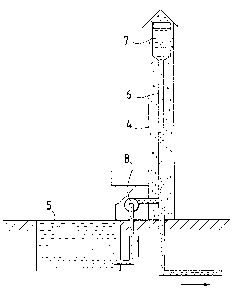Some of the information on this Web page has been provided by external sources. The Government of Canada is not responsible for the accuracy, reliability or currency of the information supplied by external sources. Users wishing to rely upon this information should consult directly with the source of the information. Content provided by external sources is not subject to official languages, privacy and accessibility requirements.
Any discrepancies in the text and image of the Claims and Abstract are due to differing posting times. Text of the Claims and Abstract are posted:
| (12) Patent: | (11) CA 1278165 |
|---|---|
| (21) Application Number: | 1278165 |
| (54) English Title: | WATER TOWER |
| (54) French Title: | CHATEAU D'EAU |
| Status: | Expired and beyond the Period of Reversal |
| (51) International Patent Classification (IPC): |
|
|---|---|
| (72) Inventors : |
|
| (73) Owners : |
|
| (71) Applicants : | |
| (74) Agent: | ROBIC AGENCE PI S.E.C./ROBIC IP AGENCY LP |
| (74) Associate agent: | |
| (45) Issued: | 1990-12-27 |
| (22) Filed Date: | 1986-11-28 |
| Availability of licence: | N/A |
| Dedicated to the Public: | N/A |
| (25) Language of filing: | English |
| Patent Cooperation Treaty (PCT): | No |
|---|
| (30) Application Priority Data: | ||||||
|---|---|---|---|---|---|---|
|
ABSTRACT OF DISCLOSURE
A water tower consisting of a main body extending upward
from the ground, a water channel and a pumping means for
pumping water into the water channel, which acts as a water
storage of the tower. In known water towers, the main water
storage is placed at the top of the tower, at a height of
several tens of meters, which means that the costs of
construction of the tower and its groundwork are consider-
able and impose strict requirements on the structure of the
tower. These problems are solved by the invention in that
the tower is provided with a water reservoir placed at its
lower end under the ground surface or substantially close to
the ground surface, said reservoir constituting a safety
storage of water, and that the water channel of the tower is
of a substantially narrow sectional form through the whole
of its length.
Fig. 2
Note: Claims are shown in the official language in which they were submitted.
Note: Descriptions are shown in the official language in which they were submitted.

2024-08-01:As part of the Next Generation Patents (NGP) transition, the Canadian Patents Database (CPD) now contains a more detailed Event History, which replicates the Event Log of our new back-office solution.
Please note that "Inactive:" events refers to events no longer in use in our new back-office solution.
For a clearer understanding of the status of the application/patent presented on this page, the site Disclaimer , as well as the definitions for Patent , Event History , Maintenance Fee and Payment History should be consulted.
| Description | Date |
|---|---|
| Inactive: Reversal of expired status | 2012-12-05 |
| Time Limit for Reversal Expired | 2007-12-27 |
| Letter Sent | 2006-12-27 |
| Inactive: IPC from MCD | 2006-03-11 |
| Inactive: Late MF processed | 2003-12-08 |
| Grant by Issuance | 1990-12-27 |
There is no abandonment history.
| Fee Type | Anniversary Year | Due Date | Paid Date |
|---|---|---|---|
| MF (category 1, 7th anniv.) - small | 1997-12-29 | 1997-12-29 | |
| MF (category 1, 8th anniv.) - small | 1998-12-29 | 1998-12-29 | |
| MF (category 1, 9th anniv.) - small | 1999-12-29 | 1999-12-22 | |
| MF (category 1, 10th anniv.) - small | 2000-12-27 | 2000-11-14 | |
| MF (category 1, 11th anniv.) - small | 2001-12-27 | 2001-12-12 | |
| MF (category 1, 12th anniv.) - small | 2002-12-27 | 2002-12-05 | |
| MF (category 1, 13th anniv.) - small | 2003-12-29 | 2003-12-08 | |
| MF (category 1, 14th anniv.) - small | 2004-12-27 | 2004-12-03 | |
| MF (category 1, 15th anniv.) - small | 2005-12-28 | 2005-12-12 |
Note: Records showing the ownership history in alphabetical order.
| Current Owners on Record |
|---|
| MIKKO HEIKKI RAIKAMO |
| Past Owners on Record |
|---|
| None |